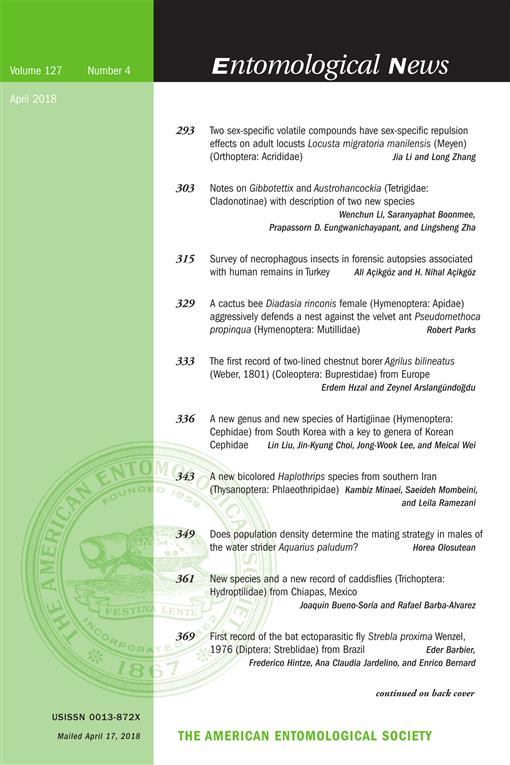Mating behavior of a large Aquarius paludum paludum (Fabricius 1794) (Hemiptera: Gerridae: Gerrini) population was investigated on several field surveys during the mating season. Both types of mating behavior known for semi-aquatic true bugs were observed in the studied population: aggressive Type I mating for non-territorial males and unaggressive Type II mating for the territorial males. Some males establish individual territories at the lake shores that they defend for around one hour and switch to aggressive mating if they fail to attract a female to mate, while most males remain non-territorial. Radial 1–1.5 meter territories were aggressively defended from other males, conflicts being always won by the male already occupying the territory. The presence of Type II males is conditioned by the absence of sufficient space for all males to establish territories. Contact guarding was much longer than documented before for A. paludum paludum, lasting for at least 12–13 hours in some cases. Based on the observations and on the existing information on the group, a more comprehensive classification of mating behavior of true bugs is proposed: Type I - non-territorial, unsignaled grasping, with contact guarding; Type II - territorial, signaled mounting with noncontact guarding; Type III - non-territorial, signaled mounting with contact guarding.
How to translate text using browser tools
1 April 2018
Does Population Density Determine the Mating Strategy in Males of the Water Strider Aquarius paludum?
Horea Olosutean
ACCESS THE FULL ARTICLE

Entomological News
Vol. 127 • No. 4
April 2018
Vol. 127 • No. 4
April 2018




